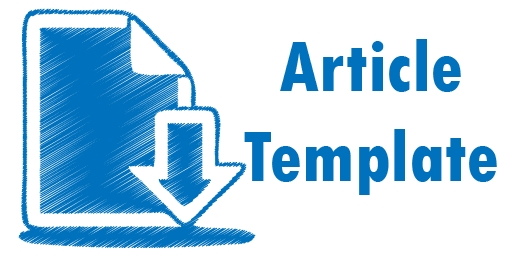The Development of Student Worksheets Based Problem Based Learning on Amine Topics for 3rd Grade of Senior High School
Abstract
The Amine is closely related to everyday life, especially the caracteristic and sampling. This subject is a part of the carbon compounds taught on the second semester of 3rd grade High School. But the implementation was transferred to first semester due to the student’s final exam, so the learning process was uneffective.Therefore it needs 2013’s curriculum compatible teaching materials as amine students woeksheet which help students study independently. The purposes of this research are to develop a Problem Based Learning Student Worksheet and determine its validity. The research implementation uses the R&D method. The development stage uses a 4D model consisting of define, design, develop and disseminate which is limited to development due to time and cost limitationsThe data collection technique was carried out by distributing questionnaires. The research data by five expert validators were analysed using the Aiken’s V formula. Based on the a research data obtained the resulting a validity of 0,87 with a valid category.References
Aida Jawadiyah dan, U. (2021). Pengembangan Lkpd Berbasis Problem Based Learning Untuk Melatihkan Keterampilan Berpikir Kritis Pada Materi Larutan Penyangga Development of Problem Based Learning Students Worksheet To Train Critical Thingking Skill in Buffer Solution Material. UNESA Journal of Chemical Education, 10(2), 195–204.
Ak, O., & Özkarde, R. (2007). The Effects of Problem-Based Active Learning in Science Education on Students ’ Academic Achievement , Attitude and Concept. 3(1), 71–81.
Amir, T. M. (2009). Inovasi Pendidikan melalui Problem Based Learning: Bagaimana Pendidik Memberdayakan Pembelajar di Era Pengetahuan. Jakarta: Kencana Prenada Media Group.
Amri, S. (2013). Pengembangan dan Model Pembelajaran dalam Kurikulum 2013. Jakarta: PT. Prestasi Pustakarya.
Arends, R. I. (2012). Learning to Teach. New York: Mc Graw-Hill Companies.
Blei, I. & Odian, G. (2005). General, organic and biochemistry second edition: connecting chemistry to your life. New York: Freeman and Company.
Depdiknas. (2008). Pengembangan Bahan Ajar. Departemen Pendidikan Nasional, Direktorat Jenderal Manajemen Pendidikan Dasar dan Menengah, Direktorat Pembinaan Sekolah Menengah Atas.
Fessenden, R. J., & Fessenden, J. S. (1982). Organic Chemistry Second Edition. Boston: Willard.
Gabriella, N., & Mitarlis. (2021). Pengembangan LKPD Berorientasi Problem Based Learning (PBL) untuk Meningkatkan Keterampilan Beripikir Kritis pada Materi Hidrokarbon. UNESA Journal of Chemical Education, 10(2), 103–112.
Handayani, T. & S. (2019). Pengembangan LKPD Berbasis Problem Based Learning pada Materi Hidrolisis Garam untuk Kelas XI SMA/MA. 1(2), 197–204.
Hosnan. (2014). Pendekatan Saintifik dan Kontekstual dalam Pembelajaran Abad-21. Bogor: Ghalia Indonesia.
Lewis. R. Aiken. (1985). Three Coefficients For Analyzing The Reliability And Validity Of Ratings. Educational and Psychological Measurement, 45, 131–141. https://journals.sagepub.com/doi/abs/10.1177/0013164485451012
Majid, A. & Chaerul, R. (2014). Pendekatan Ilmiah dalam Implementasi Kurikulum 2013. Bandung: PT Remaja Rosdakarya.
Monica, M & Luzar, L. C. (2011). Efek Warna dalam Dunia Desain dan Periklanan. 2(2), 1084–1096.
Mourtos, N. D. O. & J. R. (2004). Defining, teaching and assessing problem solving skills. California: San Jose State University.
Permendikbud. (2014). Kurikulum 2013 Sekolah Menengah Atas/Madrasah Aliyah. Nomor 59.
Sani, R. A. (2014). Pembelajaran Saintifik untuk Implementasi Kurikulum 2013. PT. Bumi Aksara.
Sugiyono. (2013). Metode Penelitian Kuantitatif, Kualitatif dan R&D. Bandung: Alfabeta.
Trianto. (2009). Mendesain Model Pembelajaran Inovatif-Progresif. Jakarta: Kencana.
Yustianingsih, R., Syarifuddin, H., & Yerizon, Y. (2017). Pengembangan Perangkat Pembelajaran Matematika Berbasis Problem Based Learning (PBL) untuk Meningkatkan Kemampuan Pemecahan Masalah Peserta Didik Kelas VIII. JNPM (Jurnal Nasional Pendidikan Matematika), 1(2), 258. https://doi.org/10.33603/jnpm.v1i2.563
Copyright toward articles published by Entalpi Pendidikan Kimia is hold by Entalpi Pendidikan Kimia. In the other side, Entalpi Pendidikan Kimia also applied CC Attribution 4.0 which means you could 1) share — copy and redistribute the material in any medium or format; and 2) adapt — remix, transform, and build upon the material; for any purpose, even commercially. As long as you give us attribution — You must give appropriate credit, provide a link to the license, and indicate if changes were made. You may do so in any reasonable manner, but not in any way that suggests the licensor endorses you or your use. Entalpi Pendidikan Kimia also applied Open Access toward each published articles, so the published content will be available freely for public.





